News
Samsung One UI 4.1 has enhanced display features for Galaxy S22 series
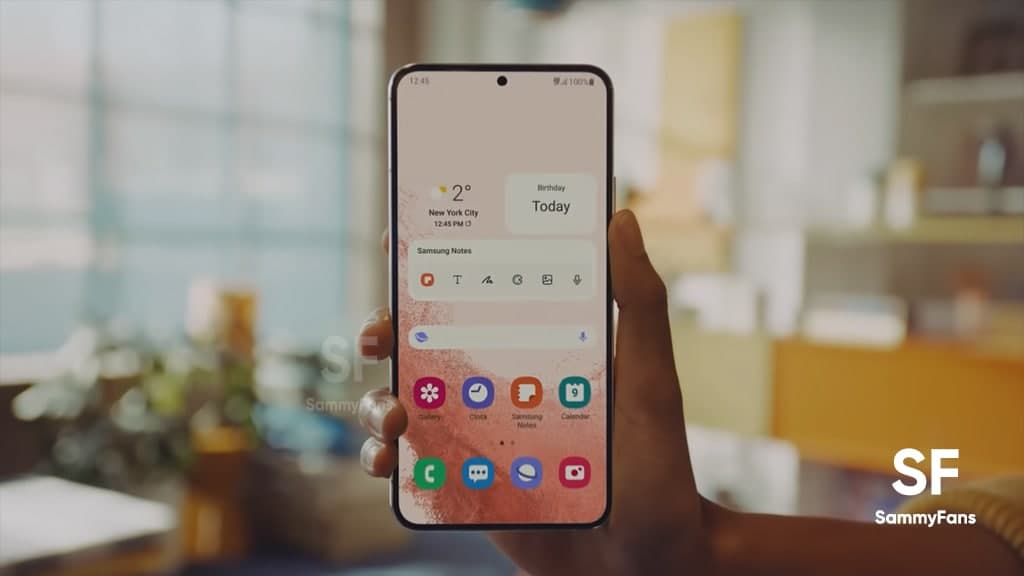
Samsung Galaxy S22 offers the greatest exterior visibility with Vision Booster’s enhanced display brightness and intelligent algorithms. The Advanced AI camera features make every experience epic and provide amazing shots from different angles and in different lighting conditions.
With the advanced display qualities of the Galaxy S22 series, you will experience visual enhancement in any lighting conditions. Thanks to Vision Booster and Intelligent Adaptive Refresh Rate, you can enjoy bright videos and other media with good color contrast.
Before trying the recommendations below, make sure your device’s software and associated apps are updated to the latest version. To update your mobile device’s software, please follow these steps – Go to Settings > Software update. Tap on Download and install. Follow the on-screen instructions.
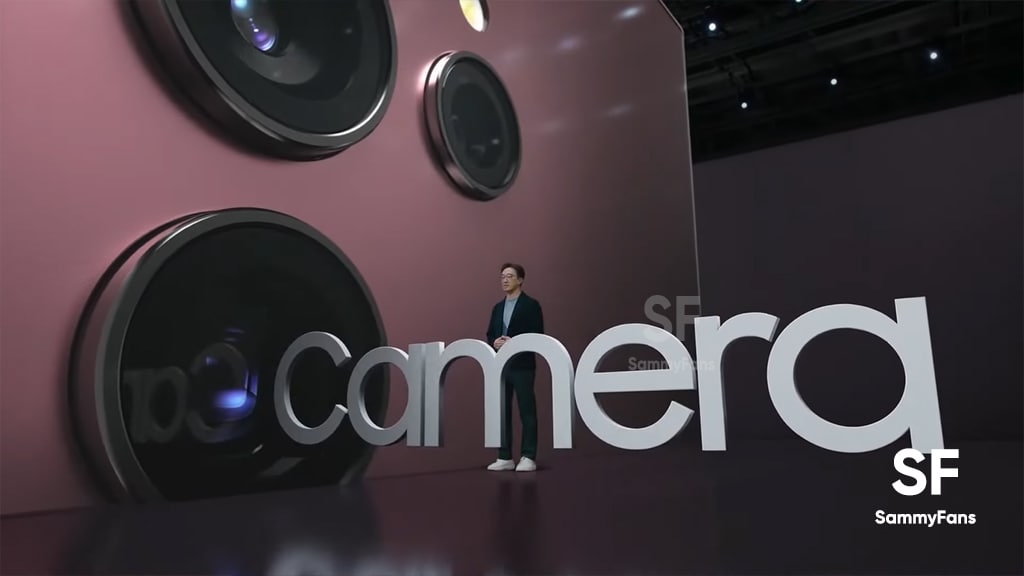
Ultimate outdoor visibility with Dynamic AMOLED 2x
The Galaxy S22 Ultra features a 6.8-inch EDGE Quad HD+ Dynamic AMOLED 2x display with 16% high brightness and a 3,000,000: 1 contrast ratio. Additionally, the 120Hz adaptive refresh rate keeps the scrolling smooth, adjusting the screen for a customized view.
Note: The Dynamic AMOLED 2x display of the Galaxy series is certified by VDE Germany for 100% mobile color volume in the DCI P3 color range.
One UI 4.1 Vision Booster
The Galaxy S22 series comes with the ‘Vision Booster‘, a technology that provides tone mapping for better visibility against strong light in outdoor conditions. Vision Booster’s intelligent outdoor algorithm analyzes histogram data of all content displayed on the display, checking the value of each pixel.
It enhances the color tone and expands the dynamic range by analyzing the scene. After that, it does tone mapping to adjust the display, making dark areas brighter and colors richer. It increasing color contrast to sharp images even in direct sunlight.
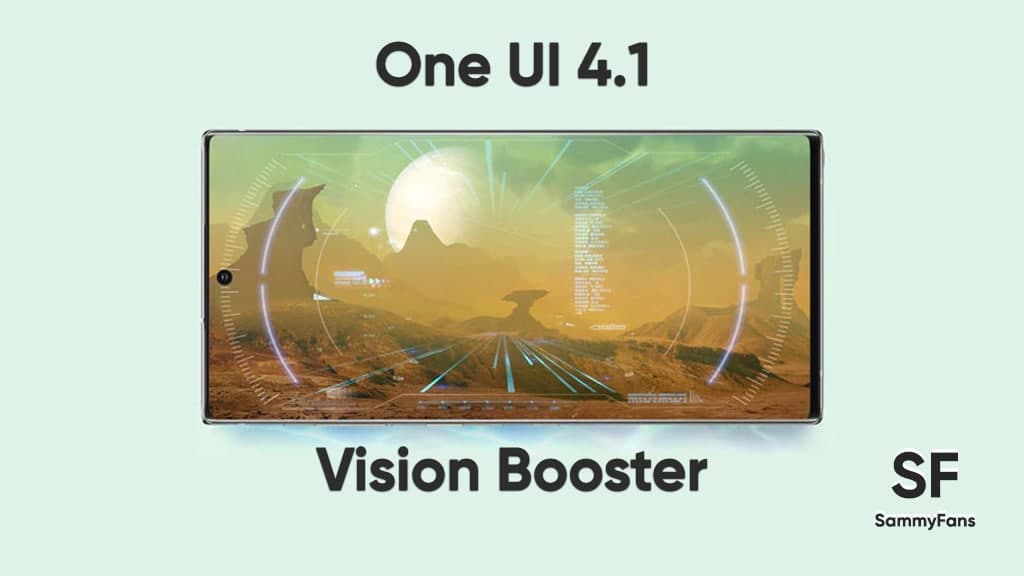
How to set Motion Smoothness on your Galaxy S22?
Use a high refresh rate to prevent the screen from blinking when switching between screens. The screen scrolls more smoothly. When you select the standard refresh rate, you can use the battery longer.
- Go to the Settings screen and tap on Display> Motion Smoothness.
- Select the Refresh rate.
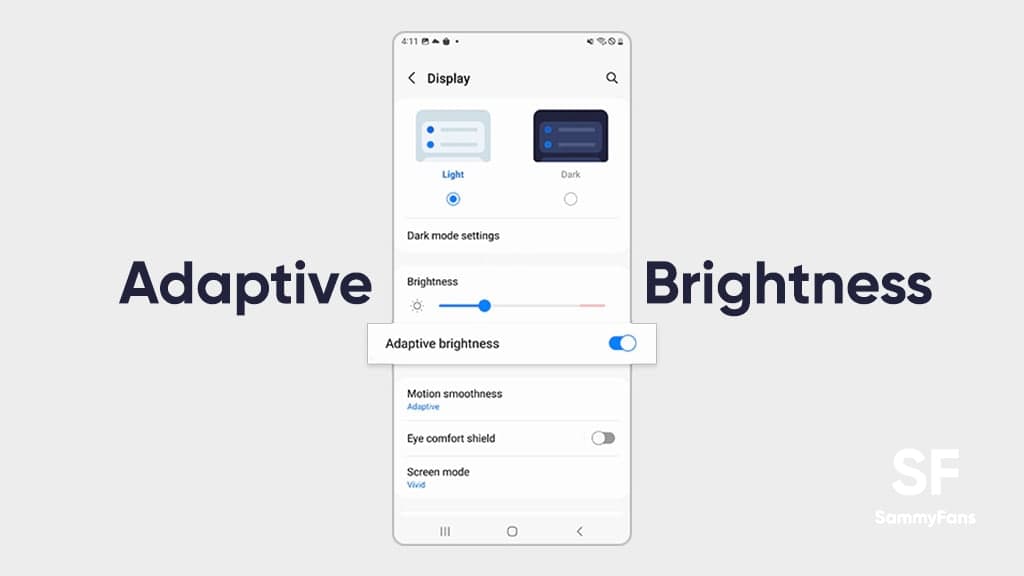
Adaptiv: Achieve smooth animations and scrolling by automatically adjusting your screen refresh rate to 120Hz.
Standard: Use the standard refresh rate under normal conditions to save battery power.
Adaptive brightness
You can set the device to track your brightness adjustments and apply them automatically in similar lighting conditions.
- Go to Settings> Display> Adaptive Brightness.

Extra Brightness
Extra Brightness mode provides greater brightness in indoor conditions. This feature is available when you deactivate the Adaptive Brightness feature.
Go to Settings> Display> Adaptive Brightness Off> Extra Brightness On.

Samsung One UI 4.1-based enhanced battery tip for using Motion smoothness
When the device is using a 120Hz display refresh rate, the battery may drain faster than when the device is set to a 60Hz display refresh rate. Therefore, if you want to save battery power, it is recommended to use the standard refresh rate of 60Hz on the device.
- Settings> Display> Motion Smoothness> Standard.
It is also recommended to optimize battery usage time by selecting Custom Battery – Settings> Battery & Device Care> Battery> More Battery Settings> Compatible Battery or letting unused apps sleep based on your usage pattern.
Also Check:
Get notified –
Aside from SammyFans’ official Twitter and Facebook page, you can also join our Telegram channel, follow us on Instagram and subscribe to our YouTube channel to get notified of every latest development in Samsung and One UI ecosystem. Also, you can follow us on Google News for regular updates.
News
Samsung boosts HBM capabilities with new investments

Samsung has reportedly signed a contract valued at around $15 million to sell and purchase semiconductor equipment to expand HBM chip production facilities at its Suzhou plant in China.
BusinessKorea reports that Samsung is expanding its investments across HBM facilities. The company aims to strengthen its advanced semiconductor packaging to lead the supply chain.
Eying the HBM4 chip boom, the Korean tech giant is focusing on enhancing its packaging capabilities to secure future technological competitiveness and narrow the gap with SK Hynix.
KEDGlobal revealed that Tesla asked Samsung and SK Hynix to supply HBM4 samples. The US EV maker could choose either Samsung or SK Hynix as its HBM4 supplier after testing samples.
Pay attention, packaging includes the tech and processes for shaping semiconductor chips to fit the devices they will be mounted on – making it an important aspect of development and production.
Notably, the Suzhou China facility is currently Samsung’s test and packaging production base outside Korea. Increased investment is seen as a choice for innovation in packaging processes and production efficiency.
Apart from this, the company is also ramping up its packaging production bases in Korea. Samsung has recently signed an investment agreement with South Chungcheong Province and Cheonan City.
News
Samsung could get a major role in Tesla’s AI revolution

Tesla reportedly asked Samsung and SK Hynix to supply HBM4 chip samples. Both semiconductor firms are developing sixth-generation high-bandwidth memory chip prototypes for Tesla.
KEDGlobal reports that Tesla asked Samsung and SK Hynix to supply HBM4 chips for general use. It is expected to choose one of the two companies as its HBM4 supplier after testing their samples.
Using custom HBM4 chips made by Samsung and SK Hynix, Tesla seeks to enhance its artificial intelligence (AI) capabilities apart from reducing AI chip reliance on Nvidia.
Samsung is working hard to win Tesla orders for HMB4 chips. The company even working with Taiwan’s TSMC to foster its HBM chip’s development and maintain an edge over SK Hynix.
SK Hynix is also accelerating its development to maintain its leadership in the HBM space. The firm winning Tesla’s HMB orders would see a sharp push in the global memory supply chain.
Notably, the 6th-gen HBM4 chips are crucial for Tesla’s Dojo supercomputer, which is designed for training AI models and will also support its AI data centers and autonomous cars.
The HBM4 semiconductor offers notable enhancements over the previous generations, delivering up to 1.65 Tbps of bandwidth, 1.4 times faster than the HBM3E while consuming 30% less power.
News
Report: Samsung eyes 2nm Exynos 2600 to attract Qualcomm, Nvidia
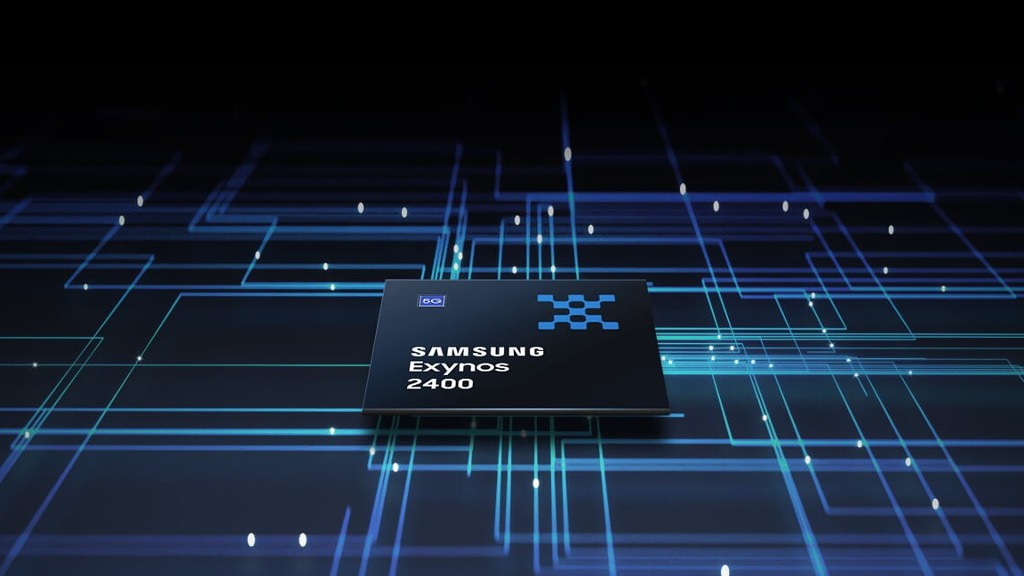
Samsung Foundry wants to produce Exynos to attract 2nm clients like Qualcomm and Nvidia. Major chip designers have no option other than TSMC for contract semiconductor production.
Digitimes report suggests that Samsung Foundry wants to produce 2nm Exynos 2600 chipset. The company has recently started Exynos 2500’s mass production for Z Flip 7, Korean media reported.
TSMC is producing 3nm Snapdragon 8 Elite chips for Qualcomm. Nvidia also produces its most advanced semiconductors using TSMC’s cutting-edge process nodes.
The latest report indicates that Samsung Foundry is advancing its semiconductor capabilities. The mass production of Exynos 2600 is under consideration for next year.
Samsung Foundry has no other option but to prove its semiconductor capabilities. If the Foundry division manages to secure decent yield rates in the 2nm process, Qualcomm may ink a deal.
Exynos 2600 is a great opportunity to demonstrate the technological innovations of the Foundry division. It would attract key clients like Qualcomm, marking a strategic push for the business.
Samsung will have 2x benefit with the 2nm process technology. The Exynos 2600 would power the Galaxy S26 series – ending the reliance on Qualcomm for Snapdragon chipsets.
Qualcomm will also get the opportunity to negotiate production costs with TSMC. Samsung Foundry is comparatively cheaper than TSMC as there will be two major options for clients.
“Samsung Electronics’ foundry division is advancing its semiconductor capabilities through the mass production of the Exynos 2600 (tentative name), marking a strategic push for self-sufficiency in mobile application processors (APs).” – Digitimes.












